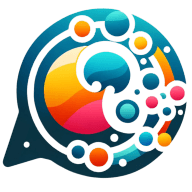13 Customer Touchpoint Redesigns That Significantly Impacted Customer Experience
This comprehensive guide examines 13 critical touchpoint redesigns that transformed customer experiences across various industries, featuring insights from leading experts in customer experience optimization. Each case study highlights practical strategies from question format adjustments in emails to technical assessments replacing generic sales presentations, demonstrating measurable improvements in engagement and satisfaction. These real-world examples showcase how thoughtful redesign of customer interactions can significantly impact business outcomes without requiring complete system overhauls.
Question Strategy Boosts Email Engagement Rates
We hold a mailing list of over 2,000 potential customers. We discovered that by asking recipients a question, and to reply in the postscript (p.s.) of our emails, our engagement rates increased by 5%. This seems to have had a compounding affect on open rates, too, as our emails are seen as more trustworthy. Many companies blast out emails to prospects but give them no reason to engage - so we suggest regularly asking a question in your emails to improve those early touchpoints.

Simplifying Onboarding Emails Awakens Customer Engagement
It became the best customer touchpoint redesign. As I was trying to rescue onboarding emails from their previous life as corporate anaesthesia. They seemed so dull, so I was pretty sure a few customers still haven't woken up. The tone was pure beige cubicle, paragraphs upon paragraphs of jargon that screamed, "We value compliance more than your will to live."
So I torched it. Instead of six pages of brand ego, we gave people one action, one small win, and a spark of personality. Think less "corporate handbook" and more "hey, push this button and look like you've got your life together." It was essentially babysitting, but at least it was the kind that doesn't make you resent the babysitter.
Customers actually engaged instead of vanishing into the void. Shocking, I know. All it took was realising humans don't enjoy being buried in bullet points written by lawyers. Who would have guessed?

Server Upgrades Transform Checkout Experience
Our most successful customer touchpoint redesign was our complete overhaul of the checkout process, which addressed specific pain points identified in customer surveys. We redesigned the checkout page layout, simplified the login process, added more payment options, and upgraded our hosting servers to improve site speed. The server upgrades made the biggest difference to our customers, as the improved processing speed significantly reduced friction at this critical conversion point. The results were impressive, with measurable decreases in cart abandonment rates and substantial improvements in overall customer satisfaction scores.

Mobile Speed Enhancements Double Walmart Orders
Our most successful customer touchpoint redesign was the mobile optimization of Walmart's Canadian e-commerce platform. We implemented a responsive design approach coupled with significant improvements to page load times, which resulted in a 20% boost in conversion rates and nearly doubled mobile orders. The speed enhancement was particularly impactful for customers, as our analytics showed that even small reductions in wait time substantially improved user engagement and purchasing confidence. This project reinforced our understanding that mobile users have unique needs and expectations regarding site performance.

Video Introductions Build Patient Trust
The redesign of the patient onboarding process proved most impactful. Previously, new members received lengthy paperwork and generic welcome emails that felt impersonal. We replaced that with a digital onboarding flow that combined simplified intake forms, a short introductory video from the physician, and immediate access to the patient portal. The specific element that made the greatest difference was the video introduction. Patients commented that seeing and hearing their doctor before the first appointment reduced anxiety and created a sense of familiarity.
This change shortened the time it took for patients to feel comfortable reaching out with questions and led to higher engagement with preventive visits. What appeared to be a small adjustment in presentation fundamentally changed how patients connected with the practice from day one, strengthening trust and long-term retention.

Transparent Quote Breakdowns Create Client Trust
I don't think about "customer touchpoint redesign." My most successful change was a simple, old-fashioned one: I completely changed how I presented a quote. Before, I would just give a client a number and hope they would sign it. But I realized that I wasn't building a relationship with them. My new approach had a huge impact.
The specific element that made the biggest difference was transparency. I started to sit with a client and walk them through the quote line by line. I show them what the materials cost, what the labor costs, and what the profit is. I explain why a certain type of shingle costs more, or why a certain type of repair takes more time. It's an open conversation.
This simple change had an immediate impact on our business. Clients are no longer just looking at a number; they are looking at a clear breakdown of the cost. They see that I'm being honest with them, and that builds a huge amount of trust. My most successful "redesign" wasn't a fancy new website or a tool. It was a simple, honest conversation with a client.
My advice to other business owners is this: stop looking for a corporate "solution" to your problems. The best way to build a great business is to be a person who is honest and transparent. The most impactful thing you can do is to just be a good person who cares about his clients. That's the only kind of "redesign" that matters.
Rapid Response System Removes Customer Hesitation
Redesigning the initial inquiry process had the greatest impact. In the past, families who called or filled out a form often waited days before receiving detailed information about available land and financing. We changed this touchpoint by creating an immediate response system that sent property details, maps, and example payment plans within hours.
The element that mattered most was speed paired with clarity. Families who once felt uncertain about affordability now had real numbers in hand right away, which reduced hesitation and built trust. The redesign showed respect for their time and financial concerns, and many customers mentioned that the quick, transparent response was the reason they chose to continue with us. It turned a moment of curiosity into a committed relationship by removing doubt before it had a chance to grow.

Online Scheduling Gives Customers Control
Redesigning the appointment scheduling process brought the most noticeable impact. Previously, customers had to call during office hours, which often led to missed opportunities and frustration for those juggling work or family responsibilities. We introduced an online scheduling tool that allowed clients to book services at any hour, choose specific time slots, and receive automated confirmations.
The element that made the biggest difference was control. Customers valued the ability to manage appointments without waiting on hold or coordinating through back-and-forth calls. That small shift translated into higher satisfaction scores, reduced no-shows, and an increase in repeat business. It proved that convenience and transparency at a single touchpoint can influence the entire customer experience more than broad, expensive marketing efforts.

Guided Equipment Handoff Reduces Support Calls
Redesigning the equipment delivery process into a guided handoff proved to be the most impactful customer touchpoint change. Instead of dropping off items with a quick instruction sheet, staff began spending an additional fifteen minutes demonstrating use, answering questions, and confirming comfort before leaving. The specific element that mattered most was real-time reassurance. Customers no longer felt left alone to interpret instructions but experienced confidence from the start. This reduced follow-up troubleshooting calls by nearly a third and improved satisfaction scores. The redesign worked because it transformed a transactional step into a relationship-building moment, showing customers that their well-being was valued as much as the product itself.

Visual Reports Turn Confusion Into Clarity
The most successful redesign came when we overhauled the initial inspection report. Previously, customers received a technical write-up that was accurate but difficult to interpret. We replaced it with a visual report containing annotated photos, a severity scale for each issue, and a clear outline of repair options. The specific element that made the biggest difference was the side-by-side comparison of damaged and repaired sections, which gave customers an immediate sense of both the problem and the solution. This redesign had a measurable impact because it turned confusion into clarity. Homeowners felt informed enough to make decisions quickly, which shortened project approval times and strengthened trust in our process.

Technical Assessment Replaces Generic Sales Presentations
The most successful customer touchpoint redesign at VoiceAIWrapper was transforming our initial customer onboarding call from a generic product walkthrough into a "technical feasibility assessment" focused on their specific implementation challenges.
Previously, our first customer meeting followed a standard demo script: platform overview, feature highlights, pricing discussion, and next steps. Customers would nod politely, ask basic questions, then often disappear during the evaluation process without clear feedback.
The breakthrough came when analyzing why prospects went silent after initial demos. Exit interviews revealed that customers left our calls excited about possibilities but uncertain about implementation complexity for their specific use case.
I redesigned the first touchpoint to function as a technical consulting session rather than a sales presentation. Instead of showing generic features, we now spend 70% of the call understanding their current systems, integration requirements, and technical constraints.
Our team comes prepared with specific questions: "What authentication system do you currently use?" "How do you handle voice data storage?" "What's your average call volume during peak hours?" This creates a collaborative problem-solving dynamic rather than a vendor pitch.
The specific element that made the biggest difference was providing immediate, customized technical guidance during the call itself. Instead of saying "our platform handles that," we'd explain exactly how integration would work with their existing infrastructure and what challenges they might encounter.
The impact was transformative. Conversion from first meeting to paid pilot increased 180% because customers left with clear implementation roadmaps rather than vague feature enthusiasm. More importantly, pilot-to-full-contract conversion improved 65% because expectations were properly set upfront.
Customer feedback consistently highlighted feeling "understood" and "technically supported" rather than "sold to." This positioning differentiated us from competitors who focused on feature comparisons rather than implementation realities.
The key insight was that customers don't buy products - they buy confidence in successful implementation. When we shifted from demonstrating capabilities to addressing specific integration concerns, purchasing decisions became much easier.

Holistic Customer View Empowers Support Team
Our most critical customer touchpoint was a source of a lot of frustration. Customers would call with a problem, and they'd get transferred to a bunch of different people, and they'd get a different answer every time. The old way of doing things was a fragmented, impersonal approach that was a direct path to a lot of customer dissatisfaction.
Our most successful customer touchpoint redesign was to turn our customer support from a support function into a concierge. The specific element that made the biggest difference was to empower every team member with a complete, holistic view of the customer. The old way was to have separate teams for sales, operations, and support. My new approach was different. The team member who was talking to the customer had access to their entire history with us.
The impact this had was a massive increase in our customer satisfaction and our loyalty. The customer was no longer a person who was being put on hold. They were a person who was a partner in a conversation. The biggest win is that we learned that the best customer support is a direct reflection of your commitment to your customers.
My advice is that the best way to redesign a customer touchpoint is to empower your team with a complete, holistic view of the customer. When you do that, you get a new level of trust and a team that is not afraid to take a risk.

Fast Factory Updates Cut Client Emails
A few years ago at SourcingXpro, I realized our email updates after factory inspections felt too stiff and generic. Clients were waiting on these reports to make big purchase decisions, so I redesigned the touchpoint to feel more like a quick personal briefing. We added clear photos from the Shenzhen warehouses, a short summary in plain language, and a direct cost-saving note if we caught defects early. The biggest change was speed—we delivered the update within hours instead of a full day. That single tweak cut back-and-forth emails by 35% and gave clients more confidence in approving orders. It showed me clarity plus timing mattered more than polish.



